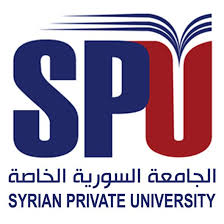With the growing demand for massive amounts of data processing transmission and storage it is becoming more challenging to optimize the trade off between high speed and energy consumption in current optoelectronic devices. Heterogeneous material inte
gration into Silicon and Nitride photonics has demonstrated high speed potential but with millimeter to centimeter large footprints. The search for an electro optic modulator that combines high speed with energy efficiency and compactness to enable high component density on chip is yet ongoing. Here we demonstrate a 60 GHz fast (3dB roll off) micrometer compact and 4 fJ per bit efficient Graphene based modulator integrated on Silicon photonics platform. Two dual Graphene layers are capacitively biased into modulating the waveguide modes optical effective index via Pauli blocking mechanism. The electro optic response which is further enhanced by a vertical distributed Bragg reflector cavity thus reducing the drive voltage by about 40 times while preserving an adequate modulation depth (10 dB). Compact efficient and fast modulators enable high photonic chip density and performance with key applications in signal processing sensor platforms and analog and neuromorphic photonic processors.
The exotic properties of two-dimensional (2D) materials and 2D heterostructures, built by forming heterogeneous multi-layered stacks, have been widely explored across a number of subject matters following the goal to invent, design, and improve appli
cations enabled by 2D materials. To successfully harvest these unique properties effectively and increase the yield of manufacturing 2D material-based devices for achieving reliable and repeatable results is the current challenge. The scientific community has introduced various experimental transfer systems explained in detail for exfoliated 2D materials, however, the field lacks statistical analysis and the capability of producing a transfer technique enabling; i) high transfer precision and yield, ii) cross-contamination free transfer, iii) multi-substrate transfer, and iv) rapid prototyping without wet chemistry. Here we introduce a novel 2D material deterministic transfer system and experimentally show its high accuracy, reliability, repeatability, and non-contaminating transfer features by demonstrating fabrication of 2D material-based optoelectronic devices featuring novel device physics and unique functionality. Such rapid and material-near prototyping capability can accelerate not only layered material science in discovery but also engineering innovations.
Photodetectors converting light signals into detectable photocurrents are ubiquitously in use today. To improve the compactness and performance of next-generation devices and systems, low dimensional materials provide rich physics to engineering the
light matter interaction. Photodetectors based on two dimensional (2D) material van der Waals heterostructures have shown high responsivity and compact integration capability, mainly in the visible range due to their intrinsic bandgap. The spectral region of near-infrared (NIR) is technologically important featuring many data communication and sensing applications. While some initial NIR 2D material-based detectors have emerged, demonstrating doping junction based 2D material photodetectors with the capability to harness the charge separation photovoltaic effect are yet outstanding. Here, we demonstrate a 2D p-n van der Waals heterojunction photodetector constructed by vertically stacking p type and n type few layer indium selenide (InSe) 2D flakes. This heterojunction charge separation based photodetector shows a three fold enhancement in responsivity at near infrared spectral region (980 nm) as compared to a photoconductor detector based on p or n only doped regions, respectively. We show, that this junction device exhibits self-powered photodetection operation and hence enables few pA-low dark currents, which is about 4 orders of magnitude more efficient than state of the art foundry based devices.
The vertical-cavity surface-emitting lasers (VCSELs) have emerged as a vital approach for realizing energy efficient, high speed optical interconnects in the data center and supercomputers. As of today, VCSEL is the most suitable for mass production
in terms of cost-effectiveness and reliability. However, there are still key challenges for higher speed modulation above 40 GHz. Here, a hexagonal transverse coupled cavity VCSEL adiabatically coupled through the center cavity is proposed. A 3-dB roll-off modulation bandwidth of 45 GHz is demonstrated, which is five times greater than a conventional VCSEL fabricated on the same epi-wafer structure. While a parity time (PT) symmetry approaches add loss to engineer the topological state of the laser system, here, a radical paradigm shift with gain introduces symmetry breaking. This idea, then enables a single mode operation with a side-mode suppression-ratio (SMSR) of > 30 decibels and signal-to-noise ratio (SNR) of > 45 decibels. The energy distribution inside the coupled cavity system is also redistributed to provide a coherent gain in a spatially separated system. Consequently, throughput power is three times higher than that of the conventional VCSEL.
In a laser system non-Hermitian methods such as Parity-Time (PT) Symmetry and Supersymmetry (SUSY) have shown and demonstrated the ability to suppress unwanted lasing modes and, thus, achieved single mode lasing operation through the addition of loss
y passive elements. While these approaches enable laser engineering versatility, they rely on the drawback of adding optical losses to a system tasked to produce single mode gain. Unlike PT and SUSY lasers, here we show an extra loss-free non-Hermitian laser engineering approach to realize single mode lasing operation for the first time. By selectively enhancing the fundamental modes quality factor, we obtain single mode operation with higher output power per cavity since all cavities in this system contribute to the laser output, in contrast to other non-Hermitian approaches. Furthermore, we show that this approach interestingly allows reducing the number of to-be-designed cavities in super-partner array as compared with, for example, the SUSY approach, thus leading to reduced design complexity upon coupled cavity scale up of laser arrays. In summary, the ability to engineer coupled laser systems where each laser cavity contributes to coherent light amplification opens up a new degree of laser-design freedom leading to increased device performance and simultaneous reduced design and fabrication complexity.


